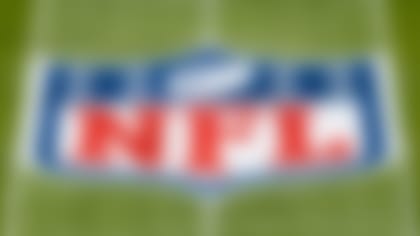NFL franchises use contextualized data to create competitive advantages. In order to realize an edge, teams need to employ the right data in the right way at the right time. This means distilling, interpreting and applying only the most influential data in a framework that accounts for their personnel, their opponents and their evolving game situations. My goal is to be your analytics department. Each week this season, I want to work for you by giving you a peek into which numbers flag in my models as the most impactful ... or the most misunderstood.
As always, let me know if your eye test is picking up on something interesting, or if there's a stat/trend you'd like me to take a deeper look at. You can hit me on Twitter @cfrelund. As with any great analytics department, the more collaborative this is, the more value we can create.
Now, let's dig into the relevant data heading into Week 11 of the 2019 NFL season:
NARRATIVE TO TRUST:
Minkah Fitzpatrick was playing out of position in Miami.
Back in August, Fitzpatrick's mother, Melissa, responded on Twitter to a beat writer criticizing her son's training camp performance by intimating that new Dolphins coach Brian Flores was playing Minkah out of position:
When asked about his mom's comments, Fitzpatrick told reporters, "She's not wrong. Coach has asked me do something right now. I got to do what they ask me to do. If we have to have some discussions in the future, we'll have those discussions.
"I'm not 215 pounds, 220 pounds. So playing in the box isn't best suited for me, but that's what coach is asking me to do. I'm going to go out there and practice my hardest."
A month later, the Dolphins gave Fitzpatrick's agent permission to seek a trade, and within a few days, Minkah was shipped to Pittsburgh in a deal that gave Miami the Steelers' 2020 first-round pick.
Pittsburgh initially caught flak for the trade, given that the Steelers were sitting at 0-2 and Ben Roethlisberger had just been ruled out for the season, leading many to surmise that GM Kevin Colbert had flipped a potential top-10 pick for a potentially flawed defender. But over the past two months, the deal has paid serious dividends to Pittsburgh, which currently holds the second AFC wild-card slot at 5-4, thanks in no small part to the deployment of Fitzpatrick as a true deep safety.
Fitzpatrick, taken 11th overall by Miami in the 2018 NFL Draft, only aligned deep on 22.4 percent of his defensive snaps with the Dolphins. He spent far more snaps in the slot (37 percent), and also logged ample time as a box safety (12.7 percent). Since joining the Steelers in Week 3, though, Fitzpatrick has lined up deep on 86.3 percent of snaps, and his presence has completely transformed Pittsburgh's air defense, especially on deep passes (20-plus air yards). In Weeks 1 and 2, according to Next Gen Stats, Steelers opponents completed 57.1 percent of deep passes, averaging 22.1 yards per attempt with a 3:0 touchdown-to-interception ratio and a 141.4 passer rating. Since Fitzpatrick's arrival, those figures have been slashed to 22.2 percent completions, 6.0 yards per attempt, 0:4 TD-to-INT ratio and a 12.5 passer rating. Overall, Pittsburgh's defense went from giving up an average of 30.5 points and 445.0 yards in those first two Fitzpatrick-less weeks to yielding just 17.1 points and 300.0 yards per game since the trade.
Individually, Fitzpatrick has nabbed five picks and scored two touchdowns as a Steeler, tossing himself squarely into a wide-open Defensive Player of the Year race. The last safety to win this award? Pittsburgh's own Troy Polamalu back in 2010.
It's worth noting that Mike Tomlin's defense now features a whopping 10 former first-round draft picks, but Fitzpatrick appears to be the one who really brought everything together. His presence as a back-end ballhawk clearly has a spectacular trickle-down effect on all three levels of the unit. He's absolutely flourishing as a deep safety, and the rest of the Steelers are feeding off him.
Looks like mama knows best after all.
NARRATIVE TO QUESTION:
Goal-line offense nets touchdowns more often when rushing plays are called.
I was lucky enough to be a guest on The ThomaHawk Show -- the wonderful podcast from former Browns teammates Joe Thomas and Andrew Hawkins -- after Cleveland's 19-16 win over Buffalo on Sunday. One of the topics I discussed with Hawk and Joe: The Browns' decisions -- and ensuing inefficiency -- in the all-important goal-to-go area of the game. In one of the most jarring sequences of Week 10, Cleveland finished its second drive of the game with a thud by failing to score on *eight consecutive plays* from inside the 2-yard line. And in the second quarter, the Browns had to settle for a chip-shot field goal after earning a first-and-goal at the Buffalo 3-yard line.
In our podcast discussion immediately following the game, Joe mentioned that spreading the goal-line alignments out more -- as opposed to keeping tighter bunches, especially when you're not utilizing a fullback -- could be a better approach. Then on Monday, it felt like goal-line decisions became a topic du jour across all media platforms, so I dug in further. Because when a future first-ballot Hall of Famer teaches you something, it's like a cheat sheet to where the good stuff is.
Let's level set first. Through Week 10 of the 2019 campaign, the NFL has seen 673 offensive plays run at the 5-yard line or closer: 385 rushing plays netting 157 touchdowns (a 40.8 percent success rate) and 288 pass plays yielding 115 touchdowns (39.9 percent). Maybe part of what's feeding into the above narrative is that we've seen more raw rushing attempts and more rushing touchdowns in this situation. But as you can see, the actual success rates are nearly equal.
With my curiosity piqued by Joe's alignment comments, I crunched all the numbers in goal-to-go situations from inside the 5-yard line for the past 10 seasons. And I broke down this data set by personnel -- How many running backs/tight ends/wide receivers? Was there a fullback? Were the tight ends used as blockers or pass catchers? -- as well as play selection, score/time remaining and defensive personnel faced. Here's what I found from this 10-season sample, in list form, along with a 2019 team to focus on in each area:
1) Teams score a goal-to-go touchdown from inside the 5-yard line about 15 percent more often when they use spread formations (this includes rush and pass).
2019 example team:Green Bay Packers. In the case of the Packers, rushing touchdowns have been the result, but the spread has indeed helped create space. Unsurprisingly, considering Matt LaFleur served as Sean McVay's offensive coordinator and the two clearly share the same schematic principles, the Rams also index high in this area.
2) Teams with running-threat quarterbacks score a goal-to-go touchdown inside the 5-yard line 23 percent more often when they use spread formations.
2019 example team:Baltimore Ravens. Lamar Jackson to Mark Andrews has been a sweet connection in this area. And of course, Lamar just running it in himself is quite effective, too. Baltimore's mark of 15 touchdowns from the 5-yard line or closer paces the league.
3) Teams with extra blockers (extra running back, fullback or tight ends used as blockers) score touchdowns in this scenario about 17 percent more often when in tight formations.
2019 example team:Buffalo Bills. No team has used more heavy formations, and this drives the Bills' six rushing TDs from inside the 5.
4) Teams that dial up bunch-formation rushing plays in these situations without the personnel to support extra blocking lose yards more often and score fewer touchdowns.
2019 example team:Cleveland Browns. Joe hit on this in our conversation -- the futility of running tight-formation plays near the goal-line without a fullback or extra blockers. The Browns are one of three teams (along with the Dolphins and Jaguars) with a negative rushing average from inside the 5-yard line. Cleveland also calls plays without extra personnel to block in this situation at the second-highest rate (Miami is first).
5) Teams that change their pre-snap formations the most inside the 5-yard line are the most successful at scoring touchdowns.
2019 example team:New England Patriots. No team has run more plays from the 5-yard line and in (35), and the Pats pace the league in rushing scores in this area (11). With 24 rushes and 11 passes in this scenario, the Pats' formations have the least repetition and are among the most balanced in terms of spread vs. tight alignment.
The biggest takeaway is that, when you've got the ball inside the 5-yard line, the play call, personnel and strategy must be aligned. It's simple, but true. "They HAVE to run it here" isn't always correct. That's a lazy narrative. It's far more nuanced than that, as you can see in the analysis above.
One last big takeaway from the past 10 seasons of data: Teams that got into this short-yardage space and didn't score a touchdown lost the game 24 percent more often than teams that did, and 15 percent more often than teams that kicked a field goal.
SLEEPER WEEK 11 TEAM:
JACKSONVILLE JAGUARS: Visiting the Indianapolis Colts.
The AFC South is still very much up for grabs, as all four teams are sitting within a two-game spread in the standings. And my model projects that the 4-5 Jags are going to upset the 5-4 Coltsin Indianapolis on Sunday, which would only muddle the division race even further.
In their 26-3 Week 9 loss to the Texans in London, the Jaguars' offense committed four turnovers, all courtesy of rookie quarterback Gardner Minshew (two interceptions and two fumbles). During the bye last week, Jags coach Doug Marrone announced that Nick Foles, who broke his left collarbone just 10 plays into the season, would retake the starting reins.
My model gives Jacksonville this win over Indianapolis in 54.5 percent of simulations. The model really likes the Jaguars' ability to bring consistent defensive disruption (their 30 sacks are tied for fifth-most in the NFL). This doesn't bode well for a Colts offense that has been quite banged up of late. And then there's the Jacksonville offense's knack for producing big plays (rushes of 10-plus yards and passes of 20-plus yards). The 2019 Jaguars average the fourth-most big plays per game (7.8), which forecasts to be a problem for an Indy defense that has given up the ninth-most rushes of 10-plus yards.
SLEEPER PLAYOFF TEAM:
OAKLAND RAIDERS: Currently second in the AFC West.
First, the total playoff percentage for all AFC teams has to add up to 600 percent, since six teams make the playoffs. With Kansas City most likely to win the division, this means Oakland and several other AFC teams are vying for the 200 percent that reflects the two wild-card spots. So, 35.6 percent is a healthy chunk.
Second, projected win totals come from adding each team's remaining-game win probabilities to their current record. Oakland projects to beat winless Cincinnati on Sunday in 71.7 percent of simulations. Ahead of the game, this means that they project for 5.717 wins through 11 weeks. After the game, it will go to 6 or stay at 5. Spin this forward for every remaining game, and you get the total. Breaking down win totals for each of the Raiders' remaining games shows that, apart from a Week 13 visit to Kansas City, Oakland has the most close-probability games left to play (falling between 0.45 and 0.55, or 45 percent and 55 percent) in the NFL. So in terms of that 7.8 figure, the final win total could end up being substantially higher -- or lower.
A main driver of the Raiders' competitiveness? Offensive efficiency. They have the league's fourth-best third-down offense (47.7 percent conversion rate), thanks to pass-blocking efficiency (third-fewest sacks at 12) and rhythm passing (SEE: Derek Carr's sparkling 70.8 completion percentage) combined with efficient rushes that have been executed in a way that has limited turnovers (fourth-fewest in the NFL with eight).
And one parting note: If the Browns beat the Steelers in Cleveland on *Thursday Night Football*, the Raiders' path to the playoffs becomes about 6 percent more probable.
Follow Cynthia Frelund on Twitter @cfrelund.




